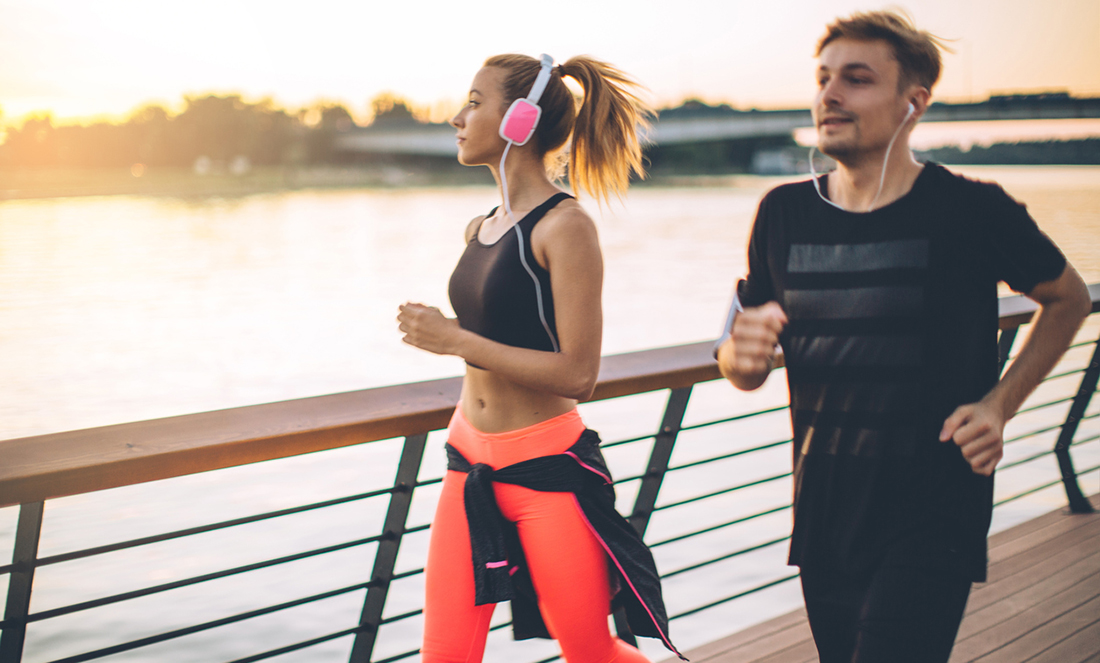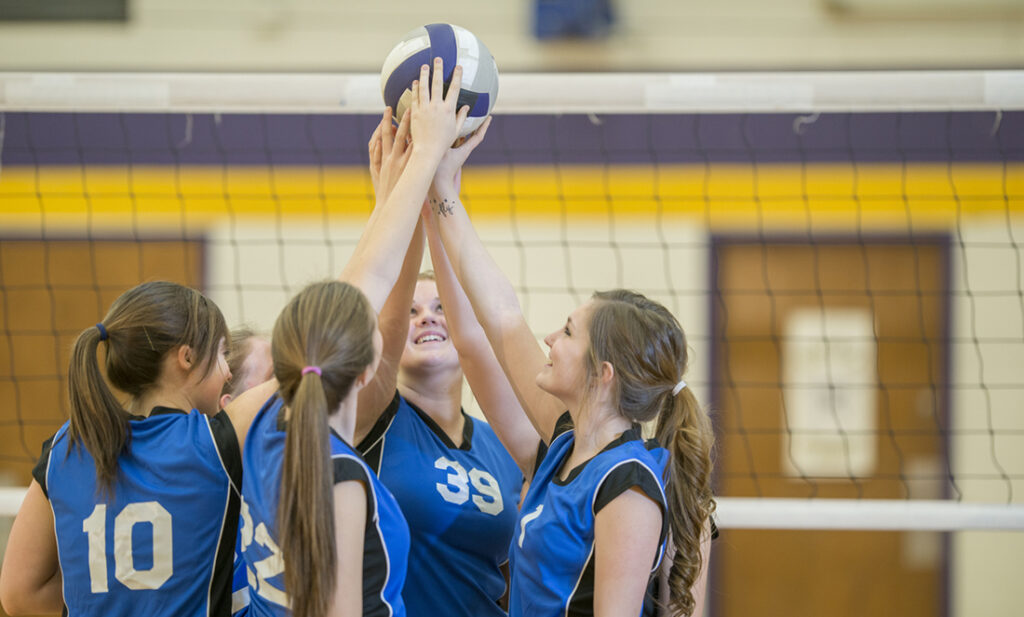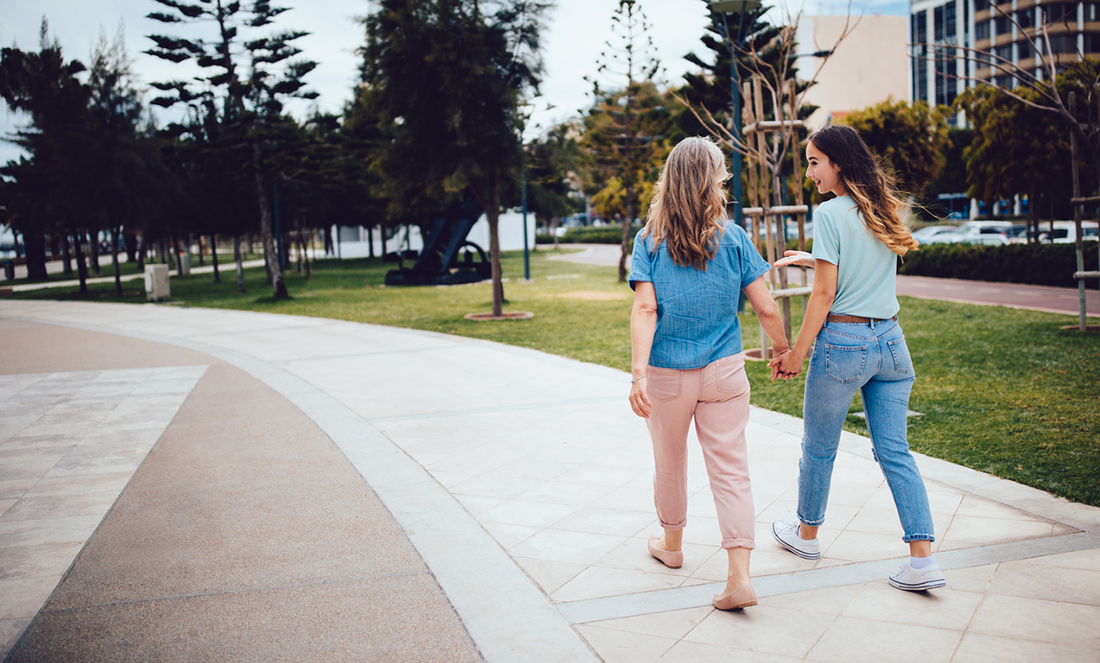Getting up and moving might be the last thing you feel like doing when you’re going through a rough patch.
Bad feelings always seem better coupled with a Netflix binge in a blanket burrito than a run on the treadmill.
But a building body of evidence suggests switching snuggies for squats could be the secret to improving mental health.
Getting physical for mental wellbeing
Physical activity isn’t just great for physical health.
A daily workout can whip your body and mind into shape at the same time.
Professor Alexandra Parker of Victoria University has seen this firsthand through her research.
A previous project she ran looked at the link between physical activity and depression symptoms in young people.
Teaming up with headspace, Alex looked at the difference between young people who did physical activity as part of their mental health treatment versus those who didn’t.
“From our former study … we did find that there was a benefit in terms of a greater reduction in depression symptoms over a 6-week intervention period for young people,” Alex tells us.
“For that study, we really worked on encouraging young people to meet the current Department of Health physical activity guidelines.”
These guidelines recommend 60 minutes of moderate to vigorous physical activity every day for 13 to 17-year-olds. For over 18s, the guidelines are a bit looser and can start as low as 30 or so minutes of moderate activity per day.
But 60 minutes a day can be a pretty tall ask for under-18s who are experiencing mental health issues.
That’s why one of the goals of Alex’s latest study is to work out how much physical activity is needed to reap the mental health benefits.
“Since we’ve morphed into this newer, bigger study, some of the evidence is not quite as clear as to how much engagement in physical activity is needed to get mental health benefits,” she says.
“It seems that some activity is better than none in terms of getting mental health benefits from it.”

Workouts that work for you
This may all be music to your ears if you believe the gym is life. But if deadlifts are your personal hell, fear not. There’s no one specific exercise you need to do to get those good feels.
For Alex’s project, she wanted the young people to set realistic, achievable goals—especially working with headspace, who have a huge focus on working with young people in their world.
“There’s no point in trying to get young people to do something that they’re not going to be able to engage in—that they absolutely can’t do,” says Debra Rickwood, Chief Scientific Advisor to headspace.
“It’s got to fit into their lifestyle. If they don’t do it, it’s not going to do them any good.”
headspace helps the young people in the study find a physical activity they want to do and can do. If goat yoga is what it takes to get you up and moving, they’re all for it.
Once the young people start hitting some small goals, they can look at increasing the threshold if they think they can handle it. But what’s most important is making a change that can be maintained long term.
“What we’re trying to do is gently and consistently encourage [young people] to make some small changes that they can sustain and get a sense of achievement from,” says Alex.
“This helps them to build their self-efficacy and get more control over the choices that they’re making.”

“If you exercise with a friend or in a social group … that physical activity then has the effects of improving social support and sense of belonging and social connectedness.”
More than muscles
So how does physical activity reduce people’s depression?
You might think it’s all to do with the rush of endorphins you get out of a workout.
It’s true that physical activity promotes the excretion of endorphins. And those endorphins not only make you feel really good, they can also lead to a reduction in pain.
But there are even more good reasons to get active.
“Engaging in physical activity sort of interrupts people or distracts them from dysfunctional or negative thoughts, because they’re focused on the exercise,” says Debra.
“And if you exercise with a friend or in a social group … that physical activity then has the effects of improving social support and sense of belonging and social connectedness—which are also important to mental health.”
Some of the young people are choosing walks with their mum or dad or even the family pooch as their workout of choice. Some who’ve gone walking with their parents said they’re able to talk and engage more with their mum or dad.
“It changes the dynamic when you’re walking and talking side by side, rather than sitting across from each other,” explains Alex.
“Side-by-side walking has been also shown to be really an effective way of engaging in difficult conversations too, so that’s some other benefits that young people have anecdotally reported from engaging in more activity.”

The next steps
As Alex’s latest study is a blind randomised control trial, she hasn’t been able to look at the results yet. But if they follow the same trend as her last study, she might be able to see her physical activity intervention rolled out across all headspace centres.
“If it is of benefit, we can actually translate it, and it can be part of standard practice in the future,” says Alex.
Physical activity is a great candidate for mental health intervention. It’s drug free, low risk and anyone can do it.
“One of the really good things about using interventions like physical activity is that it’s non-stigmatising, there’s no side effects generally—as long as you don’t hurt yourself!” Debra laughs.
“[Physical activity] is a low-cost and easy-to-implement intervention, which is the most exciting thing, because that means it’s likely to be taken up in practice,” says Alex.
But Alex doesn’t want to stop there.
She’s managed to secure funding for a research project next year looking at physical activity interventions for health and mental health providers.
“Some work has shown that mental health clinicians—or any health clinicians—who are engaged in higher levels of physical activity themselves are more likely to prescribe it for their patients,” Alex says.
Her new project will look at whether clinicians engaging in physical activity makes them more likely to prescribe it to the young people they work with.
Alex also wants to see whether the physical activity intervention could have benefits for other mental health disorders such as anxiety.
“Less is known about [physical activity’s] role in anxiety disorders, particularly in young people. So I think that’s the next area as well that I’ll be hoping to expand our current programme.”
When the bad thoughts start to hit, it can be hard just getting out of bed. But if you can make those first small steps, you may just start to outrun them.





